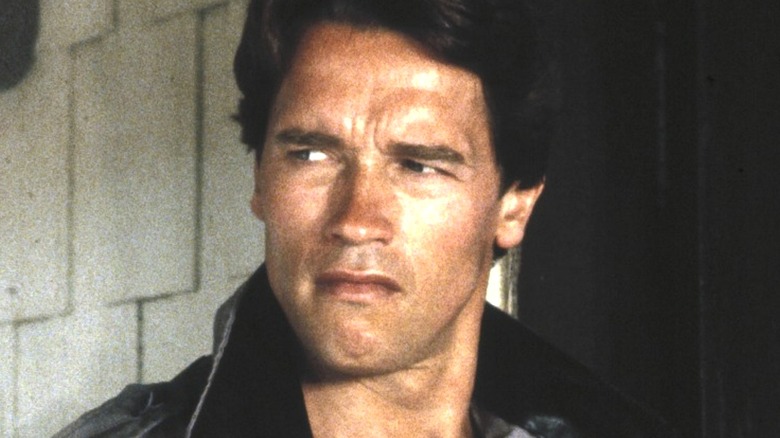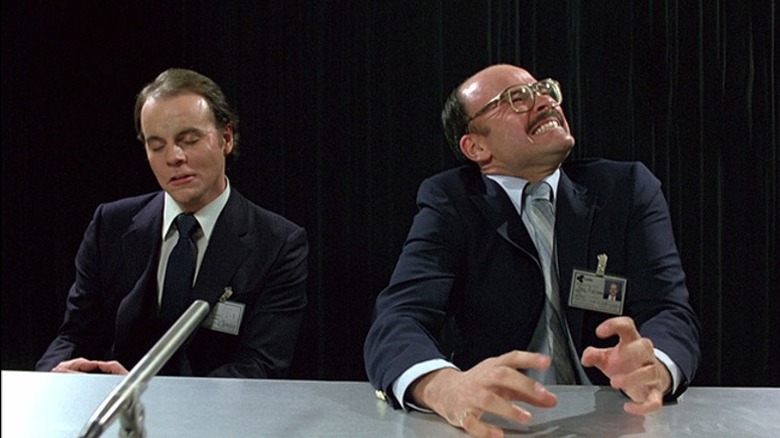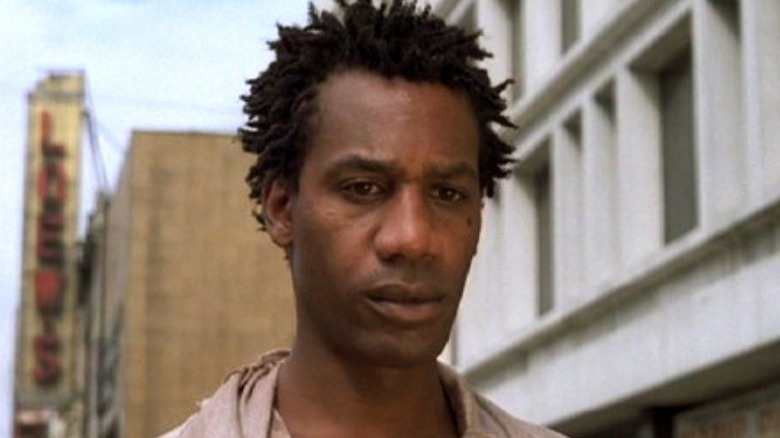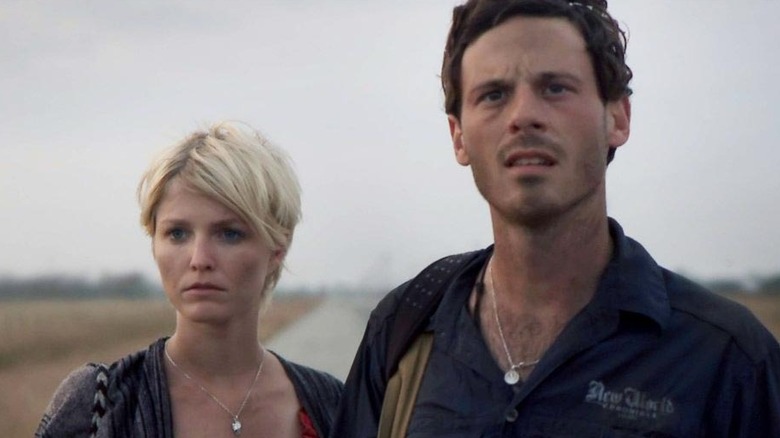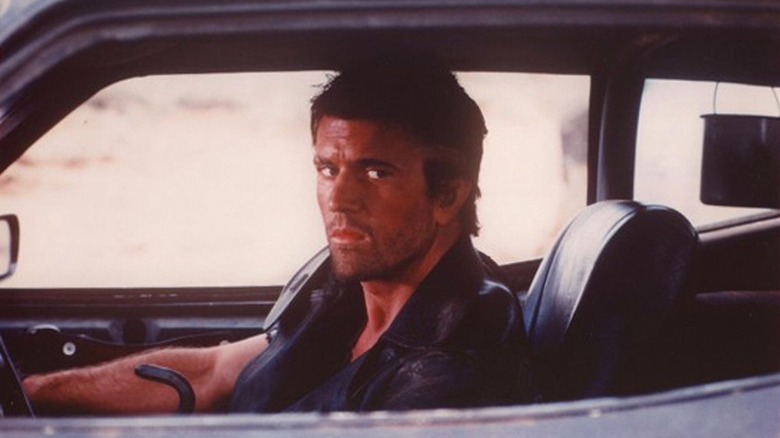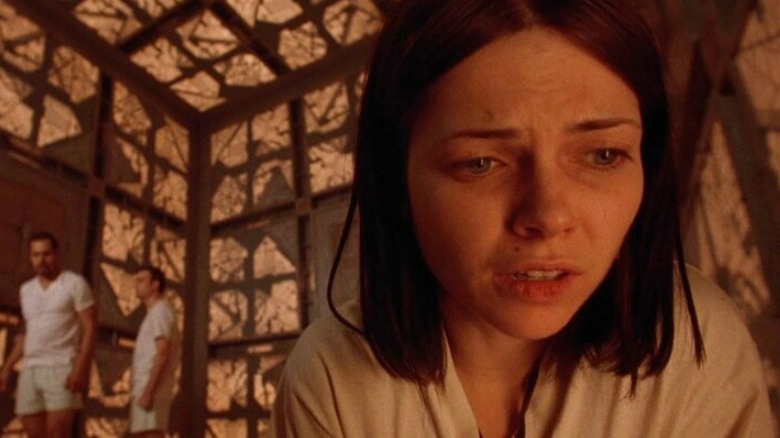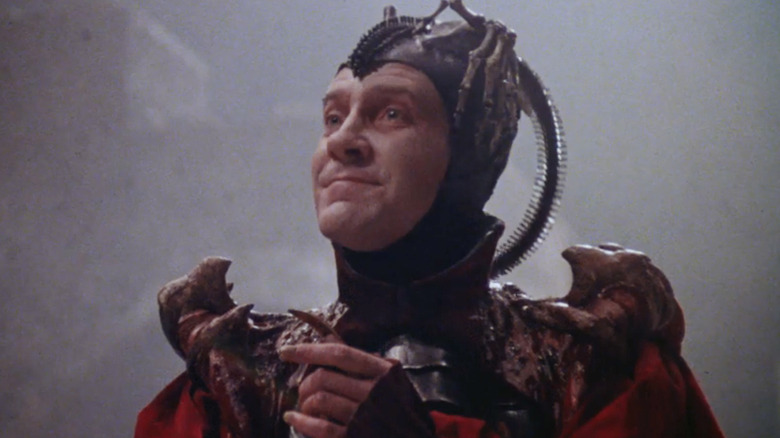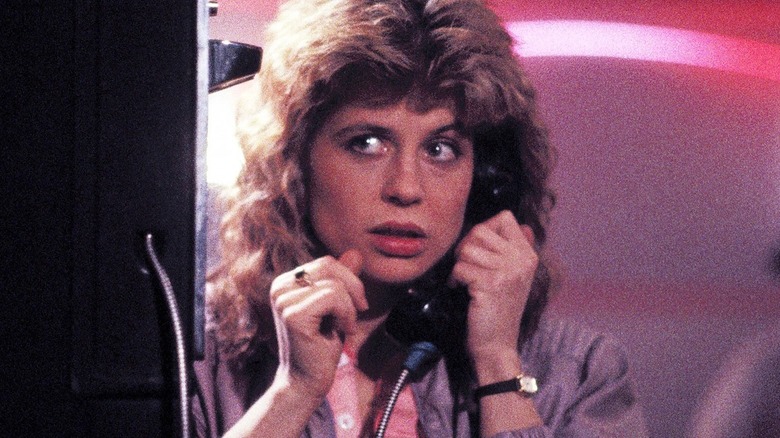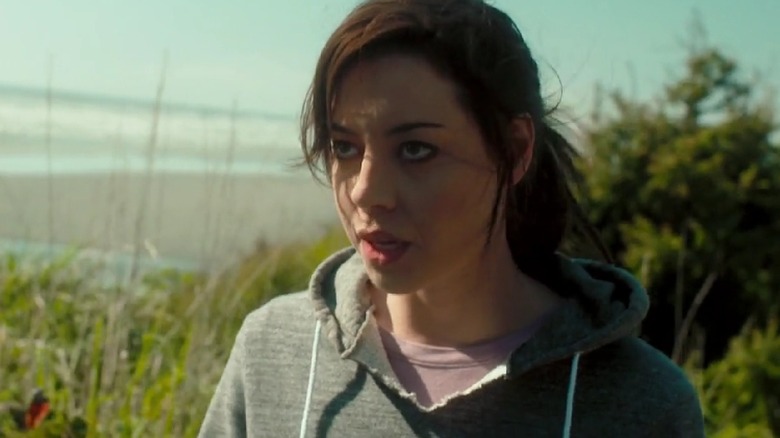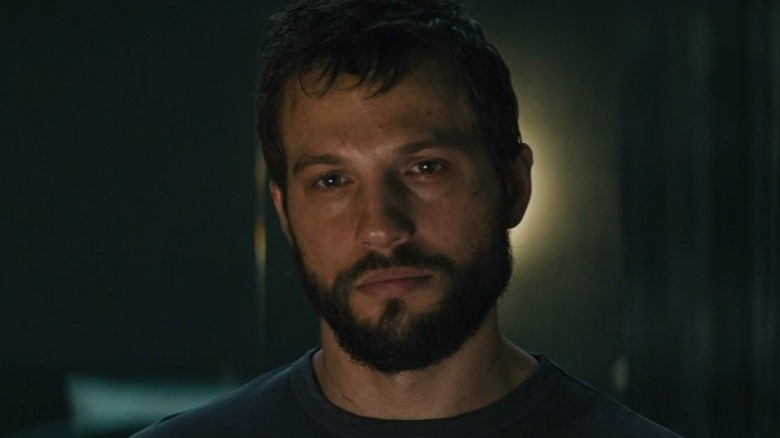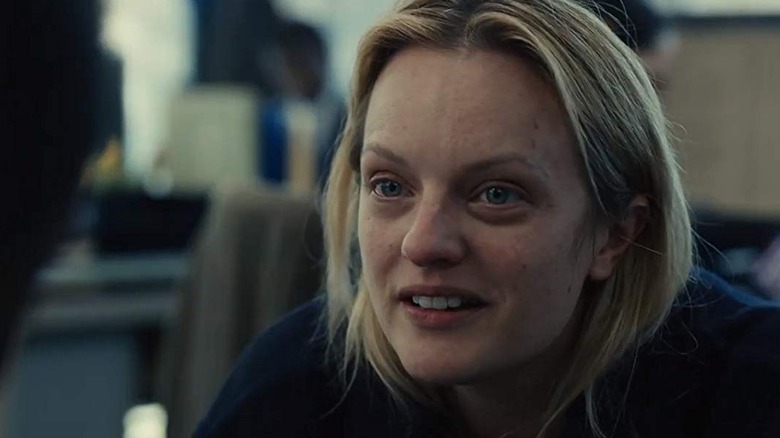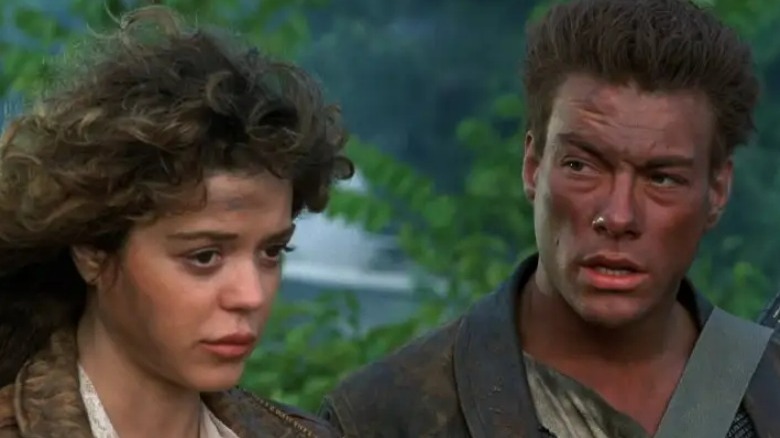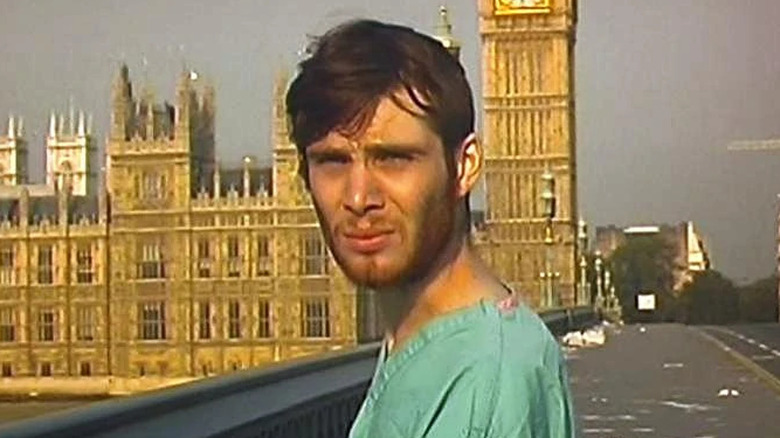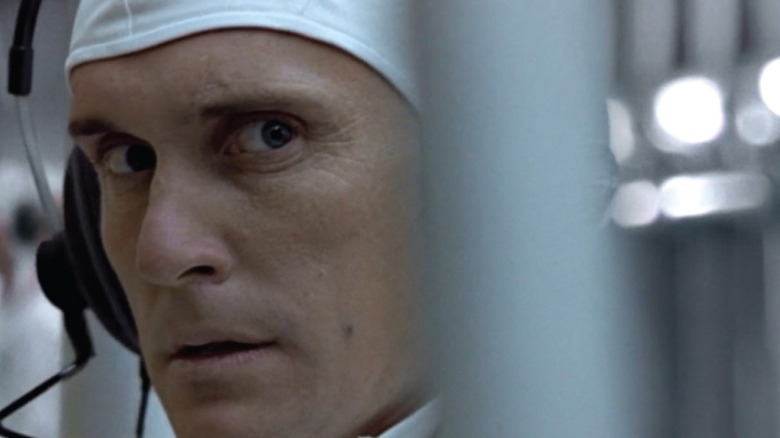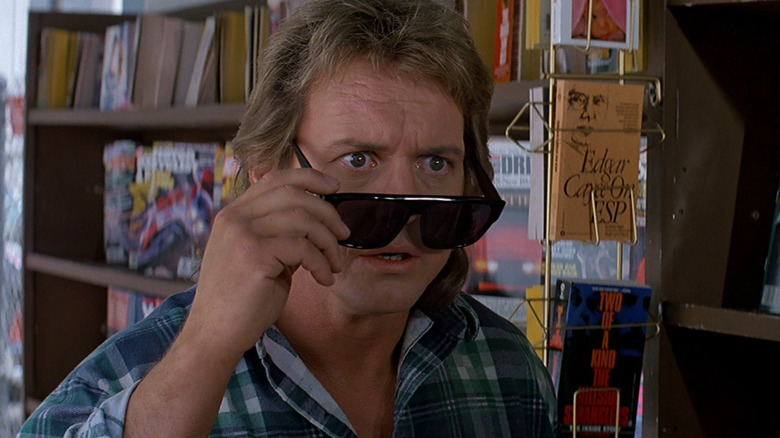Low Budget Sci-Fi Movies That Wound Up Making Millions
The first thing any filmmaker and studio need to agree on before embarking on the movie-making journey is a budget. The amount of money available to be spent will dictate just about everything, from casting and locations down to how scenes in the script can be bought to life. With science fiction, the budget undoubtedly decides what kind of special effects are possible. Still, just because a sci-fi movie is made on a limited budget, it rarely stops a director from dreaming big.
Sure, some filmmakers are realists and know it's unlikely to become the big blockbuster. Still, every single one probably wonders if theirs could be the next surprise hit, unexpectedly amassing millions of dollars at the ticket counter. After all, in the history of cinema, plenty of sci-fi films have.
Some of those were cult favorites made on a shoestring budget, while others were one-off successes that earned their producers accolades and became stepping stones to bigger careers. At least a couple of these surprise hits have gone on to become some of the most well-regarded sci-fi classics. Wondering which low-budget science fiction movies actually made millions? Read on to find out.
Scanners
Long before the likes of "Saw" or "The Human Centipede," it was David Cronenberg's obsession with the obscene that was nauseating audiences. For the first part of his career he had a string of low-budget sci-fi shockers that could qualify for this list, but one stands out far more than most — the 1981 classic "Scanners."
Centered on a group of people with deadly telepathic powers, "Scanners" was made for as little as $4 million. By contrast, "Star Trek: The Wrath of Khan," released just a year later — which was itself a modestly budgeted blockbuster — still cost well in excess of $10 million. Clearly, Cronenberg was not given the same leash as other more popular projects in the genre, but he made the most of it. While dated today, the effects work and even contribute to some iconic moments, including one of the best head explosions in movie history.
Released in January of 1981, "Scanners" surprised with a $14 million box office haul. This put it just behind Sylvester Stallone's "Nighthawks" and ahead of Jack Nicholson's "The Postman Only Rings Twice" for the year, an impressive feat for a movie without the benefit of a big budget or a big brand name like "Star Trek" or "Star Wars."
The Brother from Another Planet
Science fiction is always at its best when it explores serious political and social issues, but the '80s were a time when the biggest sci-fi films embraced action and excitement. However, one independent film, "The Brother from Another Planet" starring Joe Morton, went straight after the topic of racism. It tells the story of an alien from another world who resembles an ordinary black man who lands in New York City while on the run from interstellar bounty hunters.
Throughout the film, the Brother, as he is only known, finds work as a television repairman while using strange other-worldly powers to aid in his quest to understand humanity. What he finds is a highly fascinating culture that he slowly learns to appreciate, warts and all. Though the movie's low budget is evident — there are few effects to be had and the alien make-up for his inhuman feet is crude and brief — it remains a powerful sci-fi story dripping with social allegory.
Led by Morton's evocative performance, "The Brother from Another Planet" connected with audiences and earned well over $3 million in domestic theaters. While this may not sound like much, consider that it was produced for just $350,000.
Monsters
Post-apocalypse movies are some of the easiest to make on the cheap. Still, few films in this sub-genre have ever looked as good as the 2010 sci-fi drama "Monsters," whose polished, slick production and incredible creature effects obscured how small its budget really was. You may be surprised just how little the movie was made for, with director Gareth Edwards claiming it was "way under $500,000," thanks in part to so-called prosumer filming equipment that came in at around $15,000.
Set in the very near future, the movie establishes that a space probe from NASA has crash-landed back on Earth in Mexico, bringing with it deadly organic specimens from outer space. These specimens have since grown and mutated into massive, tentacled creatures that have ravaged the region, leading to a military-protected quarantine zone. A stunning sci-fi survival story, it centers on journalist Andrew Kaulder (Scoot McNairy), who is sent into the zone to retrieve Samantha (Whitney Able), the daughter of his employer, and bring her back to the United States.
Earning over $5 million at the worldwide box office, it was the strong reviews that helped "Monsters" the most. Its success catapulted Gareth Edwards to superstar status, and he was quickly hired to direct the 2014 reboot of "Godzilla," whose budget was more than 300 times larger than what he had to work with on "Monsters."
Mad Max
Probably the most famous low-budget success story of all time, the Australian sci-fi action movie "Mad Max" came from the mind of writer and director George Miller. A raucous debut for the future legend, he'd cast little-known actor Mel Gibson in the role of Max Rockatansky, a law enforcer in a post-atomic nuclear wasteland where warlords vie for power and small communities of survivors scrounge for scraps and precious oil.
Made for just $200,000, Miller seems to have funneled what little money was available into its fast-paced action and over-the-top stunts, using the desolate Australian outback as a cheap stand-in for the barren apocalyptic landscape. Today, the film is seen as a watershed classic, a cinematic ground-breaker that touched off a wave of copycats, all seemingly inspired by the film's ability to make a top-notch sci-fi action movie on a minuscule budget. Movies like "The New Barbarians" and "Dune Warriors" all tried their hand at aping the success of "Mad Max," to no avail, while even big-budget Hollywood copycat's emerged like the infamous box office bomb "Waterworld."
This cottage industry of failed rip-offs sprang up not just because "Mad Max" was a great movie made on the cheap but because it raked in nearly $100 million at the box office. Yet none of these imitators seemed to grasp that it was Miller's impeccable storytelling that made the film great.
Cube
A low-budget sci-fi gore-fest, "Cube" is the brainchild of first-time director Vincenzo Natali, who's since gone on to work mostly in television, helming episodes of "Hannibal," "Orphan Black," and "Westworld." However, back in the late '90s, Natali managed to take a paltry $250,000 budget and turn it not just into a multi-million dollar earner but a multi-film franchise with a diehard following.
Part mystery, part thriller, and all terror, "Cube" introduces a cast of strangers who all awaken to find themselves trapped in a strange series of cube-shaped rooms, with no idea how they got there or why. Each room is rigged with a deadly trap, and the rag-tag group must work together to solve a puzzle and escape a seemingly inescapable death trap. More than a decade ahead of its time, when movies like "Hostel" and "Saw" gained traction with similar themes, "Cube" helped popularize an entire sub-genre of isolation horror. It also earned nearly $9 million at the ticket counter.
Helped by a mostly-unknown cast, a lot of money was saved by using the same cube-shaped set for every torture chamber, with differently-colored lighting expressing a new room. A true cult classic, it received two follow-ups, a sequel called "Cube 2: Hypercube" in 2002 and the prequel "Cube Zero" in 2004. A Japanese remake landed in 2021.
Time Bandits
Filmmaker Terry Gilliam today is remembered for his big screen favorites like "12 Monkeys" and "Fear and Loathing in Las Vegas." In the early 1980s, however, the writer and director was still likely best known for his role as an animator and part-time actor in the British comedy classic "Monty Python's Flying Circus." His first directorial effort was on the troupe's big screen debut "Monty Python and the Holy Grail," and a few years later, in 1981, he'd helm the sci-fi fantasy favorite "Time Bandits."
Produced on a modest budget of just $5 million, "Time Bandits" was co-written by his "Monty Python" pal Michael Palin, and costarred fellow "Monty Python" vet John Cleese alongside the legendary Sean Connery. The expansive supporting cast included Shelley Duval, Ian Holm, David Warner, and Kenny Baker. The film told the story of an 11-year-old boy who learns that his bedroom closet hides a portal through time. Drawn into a time-traveling adventure where he meets the likes of Agamemnon (Connery), Robin Hood (Cleese), and Napoleon (Holm), the boy fights alongside a group of dwarves on a quest to find a vast trove of riches.
Considering its small budget, the film was seen as a big success with a $42 million box office run. It helped propel Gilliam to directorial fame and finally earned him the clout needed to get his passion project, "Brazil," off the ground.
The Terminator
"Mad Max" may be the biggest hit of any low-budget sci-fi, but "The Terminator" has hands down achieved the most success of any low-budget sci-fi flick. Newcomer James Cameron, who'd cut his teeth on the B-grade horror movie "Piranha 2: The Spawning," showed off just how good he was a few years later, writing and directing the sci-fi action movie that redefined the genre. He cast body builder-turned-actor Arnold Schwarzenegger as a cold-blooded cyborg killing machine from the future, TV actress Linda Hamilton as his human target, and little-known actor Michael Biehn as her protector.
With a relatively small budget, Cameron found ways of stretching his dollars just enough to hire leading SFX guru Stan Winston to spearhead the cutting-edge visuals, creating one of cinema's most iconic movie villains in the process. A pioneering sci-fi adventure from top to bottom, "The Terminator" featured pulse-pounding action and adrenaline-pumping thrills. Amazingly, it was all made for a slim and efficient $6.4 million, which the studio turned into a whopping $78 million.
Beyond just its own success or even the series of sequels it generated, it's also birthed one of the best sci-fi franchises on the planet, collectively earning over $2 billion at the box office on top of decades of merchandising that includes books, comics, toys, and video games, and even a TV spin-off. How's that for a return on investment?
Safety Not Guaranteed
A darling of the indie scene in 2012, "Safety Not Guaranteed" took the sci-fi genre by storm with an unconventional drama. Presenting a quirky, offbeat story of a man who answers a bizarre personal ad looking for a companion for a trip through time, you might be surprised to learn that the film is actually based on a real newspaper ad. Directed by Colin Trevorrow and starring Aubrey Plaza, Mark Duplass, Jake Johnson, and Kristen Bell, the movie garnered praise for its oddball story, idiosyncratic characters, and sharp screenplay, becoming a cult hit in the process.
What earns it a place on our this list is that the movie was made for not much more than $750,000. Picked up by Film District for $1,000,000, the producers netted a decent profit before it was ever released. When it did land in theaters, it totaled a modest but impressive $4,010,957 despite being shown on less than 150 screens in the United States and limited showings internationally.
Where it really shined, however, was with critics and audiences. It also must have impressed studio brass because Trevorrow was plucked from obscurity to oversee the relaunch of the "Jurassic Park" trilogy.
Upgrade
These days low-budget sci-fi is a lot more likely to look good thanks to advances in special effects and higher-grade consumer filmmaking equipment. Just about anyone can shoot professional-looking footage with the camera in their pocket, and thanks to streaming, indie films can be seen by more people than ever. A result of this process, however, is that more independent sci-fi movies are relegated to Netflix, Amazon, or Hulu, bypassing the cinemas altogether, meaning that fewer low-budget sci-fi movies end up making millions. Still, indie studio Blumhouse has given us a couple more, starting with the 2018 sci-fi thriller "Upgrade."
A studio known for its tight budgets, Blumhouse gave director Leigh Whannell just $5 million to tell the story of a highly trained killer whose biology has been augmented using advanced A.I. technology. With an experimental microchip implanted in his brain, a man named Grey (Logan Marshall-Green) gains enhanced abilities and uses them to exact revenge on those who've twisted his body and soul. Brutally violent, it released strong reviews from critics and audiences alike and wound up leaving theaters with a $16 million payout.
Considering it was made for even less than "The Terminator" was more than 30 years earlier, it's a pretty impressive take, and it earned Whannell credibility for his ability to make the most out of a paltry budget.
The Invisible Man
Just two years after "Upgrade," director Leigh Whannell struck again, turning another low-budget Blumhouse production into a barn burner, perhaps the biggest on this list. This one was all the more impressive, as the box office take for 2020's "The Invisible Man" was hampered by the COVID-19 pandemic early that year. Led by "The Handmaid's Tale" star Elisabeth Moss, "The Invisible Man" took the classic story of a scientist who finds a way to become transparent into a powerful treatise on domestic violence.
In this version of the story, we meet Cecilia Kass (Moss), a woman stuck in a toxic and dangerous relationship with her domineering husband, a scientist named Adrian Griffin (Oliver Jackson-Cohen). However, when she finally escapes his abuse, Griffin apparently ends his own life, leaving her millions of dollars. Though she's at first relieved to be free of him for good, she soon begins to believe that his experiments in invisibility have given him the perfect opportunity to fake his death and haunt her from beyond the grave.
Made on a $7 million budget, "The Invisible Man" is full of nail-biting suspense and eye-popping terror, turning the story from a monster movie into a captivating sci-fi thriller. Released just weeks before mass cinema closures in March of 2020, it still raked in a jaw-dropping $139 million — and who knows how much more it could have made if not for the pandemic.
Cyborg
"Cyborg" may be just as famous for its wild behind-the-scenes origins as for its rags-to-riches story. It all starts with the low-budget movie studio called The Cannon Group, run by infamous producers Menahem Golan and Yoram Globus (via New York Post). Known for their penny-pinching ways, they had secured the rights to both "He-Man" and "Spider-Man." The first had found its way to theaters as "Masters of the Universe" with Dolph Lundgren, and the studio was ready to roll on a sequel right alongside the feature film debut of Marvel's wallcrawler.
However, after issues with the rights to both characters caused "Spider-Man" and "Masters of the Universe 2" to be shut down, director Albert Pyun was approached to salvage what remained. Leftover sets, costumes, and props developed for both projects were repurposed, with Pyun writing and directing "Cyborg" as a way of making the best out of a bad situation, as he described to Gizmodo in 2012. With a budget of around half a million dollars, Pyun cast emerging action star Jean-Claude Van Damme as a post-apocalyptic hero named Gibson Rickenbacker, a soldier-of-fortune who must protect a young woman could hold the key to restoring civilization.
While it wasn't an easy road to the big screen, Pyun was able to take table scraps from two shelved movie projects, combine them with the charisma of an up-and-coming Van Damme, and turn it into a $10 million dollar success.
28 Days Later
A film that reinvented the zombie sub-genre, "28 Days Later" was helmed by Danny Boyle, who'd already turned out several big films, including "Trainspotting," "A Life Less Ordinary," and "The Beach." For this new post-apocalyptic movie, Boyle would team with "The Beach" screenwriter Alex Garland and a cast of then lesser-known actors like Cillian Murphy, Naomie Harris, and Christopher Eccleston.
An astonishing new take on the zombie apocalypse, Boyle envisioned a somber, dreary story where a plague has destroyed much of mankind, turning victims into bloodthirsty, mindless flesh-eaters. Nearly a month after the virus has ravaged the United Kingdom, a young man named Jim (Murphy) awakens from a lengthy coma to find the city deserted and must contend with both ravenous zombies and the sinister Major West (Eccleston).
Boyle used the movie's small $8 million budget to good effect. Forced to save where he could, he and his crew filmed in the early dawn hours for astonishingly brief two-hour windows, the only times they were permitted to close down the busy London streets (via Cinema), using multiple camera set-ups to capture as much as possible. Despite the difficulty of the shoot, the movie's mouth-watering $82 million dollar box office take made it worth every struggle they endured.
THX 1138
A young film student in the 1960s created a 15-minute sci-fi short about a dystopian future where the government suppresses free thought and even emotion. So impressive was the short film that fledgling producer Francis Ford Coppola would select it for adaptation into a full-length feature film under his American Zoetrope studio banner (via TCM). The film's director, a young man named George Lucas, would be given more than 700,000 dollars to make it and, with a cast led by Robert Duvall and Donald Pleasence, it became a trailblazing sci-fi classic.
In the film, we meet a man whose only name is his designation, the titular THX 1138, who lives in a future world where dissent and freedom are squashed by the state. Totalitarian security forces led by silver-skinned androids enforce the laws, all citizens are garbed in pure white, and their heads are shaved clean so that everyone is alike. But when 1138 meets a woman named LUH 3417, they stop taking their emotion-suppressing drugs and are faced with the grim reality of their world for the first time.
A terrifying, almost nightmarish psychological sci-fi adventure with plenty of social messaging and warnings about the future, it was lauded by critics and loved by movie-goers. Over time, it amassed $2.4 million in theaters and earned Lucas the real attention of Hollywood.
They Live
Even by the end of the 1970s, director John Carpenter was no stranger to low-budget smash hits, with "Halloween" and "Assault on Precinct 13" both produced for under a million dollars en route to tens of millions in theaters. By the mid-1980s, he'd done it a couple of times more, and in 1988 he scored a hit in a new genre with "They Live," a low-budget sci-fi action movie starring a WWF wrestler.
Made for just $4 million — less than Carpenter's own "Escape from New York" seven years earlier — the movie eschews the bigger effects and elaborate sets, telling a grittier, street-level sci-fi story. Absent is a post-apocalyptic setting, as "They Live" instead takes place in modern-day Los Angeles, where a downtrodden blue-collar everyman named Nada (Roddy Piper) stumbles upon a strange pair of glasses that reveal a hidden alien presence on planet Earth. With the help of construction worker Frank (Keith David), Nada sets out to tear down the aliens' worldwide conspiracy.
A science fiction action movie with an unconventional star oozing with razor-sharp social satire, "They Live" has become a beloved '80s classic. While it wasn't as successful as "Escape from New York," it did earn an impressive $13 million on a much smaller budget.
